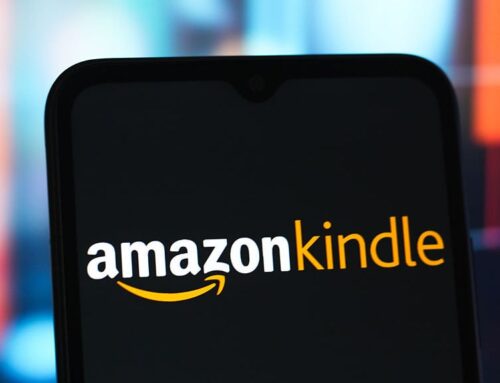Walmart, Amazon, Costco, And Home Depot Tackle The Tariff Whiplash
June 1, 2025
The five largest retailers in the U.S — Walmart, Amazon, Costco, Kroger, and Home Depot– have all reported their financial earnings for the first part of 2025. The combined force of these retailers equates to nearly 20% of total retail sales in the United States. The big five retailers all agree that it is difficult to predict the future impact of tariffs, however, each retailer has been working on mitigating the impact of tariffs on pricing and product availability for its consumers.
The impact of tariffs on financial reporting so far this year has been minimal because most of the earnings reported are from periods before the April 5th tariffs took effect. Home Depot and Walmart shared financials through the end of April, while Costco data goes through mid-May. Kroger, which operates over 20 store banners including Ralphs and Harris Teeter, reported financials through January. Amazon’s first quarter financials run through March.
Inventory Pulled Forward by Walmart, Amazon, Costco and Home Depot
Walmart, Amazon,Costco and Home Depot have pulled forward their inventory purchases to mitigate the impact of tariffs. Purchasing inventory in advance will help ensure a company has product in stock down the line and can offer the best possible pricing. Amazon encouraged its third-party suppliers to do the same. Costco moved up the delivery for patio products and sporting goods to stay ahead of the tariff pricing impacts.
Walmart And Home Depot Double Down On Best Pricing
Even the U.S.’s largest retailers cannot take the sole burden of the tariffs by absorbing the costs without raising prices. Discount stores, grocery stores, ecommerce players, and warehouse clubs typically run on very thin profit margins. “We’re positioned to manage the cost pressure from tariffs as well or better than anyone. But even at the reduced levels, the higher tariffs will result in higher prices,” said Doug McMillon, CEO of Walmart. The magnitude of the tariffs cannot be offset by lower-margin businesses.
Home improvement giant Home Depot plans to maintain its competitive pricing despite tariff impacts through stronger supplier partnerships, supply chain diversification, and focusing on improving its productivity across activities. “We don’t see broad-based price increases for our customers at all going forward. It’s a great opportunity for us to take share, and it’s a great opportunity for our suppliers to take share as well,” said Billy Bastek, executive vice president of merchandising at Home Depot.
Grocery Titans Kroger, Walmart, And Costco Aim To Keep Prices Low
In the grocery sector, where food prices are 2.0% higher on a rolling 12-month basis, consumers are already having to spend more based on inflation. Companies like Walmart are trying to protect against additional costs due to tariffs on food products, considered a non-discretionary expense. “We won’t let tariff-related cost pressure on some general merchandise items put pressure on food prices, ” said McMillon.
Food tariffs on countries in South and Central America are pressuring imported items like bananas, avocados, coffee, and flowers. “We’ll do our best to control what we can control in order to keep food prices as low as possible,” said McMillon. Costco held pricing on pineapples and bananas despite the cost of these goods rising due to tariffs. However, when it came to flowers, which were also impacted by additional tariffs, the company felt that a price increase was absorbable by the consumer as flower purchases were viewed as a discretionary expense.
Kroger, with 100% of its sales in the U.S., is looking at being proactive and diversifying its supplier base to keep prices lower, especially in the fresh produce category. “We expect inflation to be 1.5% to 2.5%, which does not include the effects from tariffs,” said Todd Foley earlier in the year, interim CFO at Kroger.
Diversification Strategies Across Walmart, Amazon, Costco, And Home Depot
Global retailers have been looking at diversifying sourcing options to reduce the cost of goods as tariffs are implemented. Amazon and Walmart have been diversifying their supply chains for many years, with a focus on not being too reliant on one country for imports. Two-thirds of what Walmart sells in the U.S. is made, assembled, or grown domestically.
Walmart is further diversifying its revenue by leaning into better profit areas such as selling advertising through its retail media network, expanding its marketplace, and increasing membership income.
Costco is rerouting goods to non-U.S. markets and working closely with suppliers to find alternate production locations. The private label brand, Kirkland Signature, which represents one-third of Costco’s sales, continues to be a consumer favorite in quality and value. The company has been sourcing the products into countries where items are sold to keep the pricing down. Costco’s most profitable sector, its membership revenue, is up 5.4%, with membership increasing to 137 million members last year despite a rise in its membership price.
Home Depot has diversified its supply chain, with over 50% of purchases already sourced in the U.S. “We anticipate that twelve months from now, no single country outside of the United States will represent more than 10% of our purchases,” said Ted Decker, CEO of Home Depot.
Differing Strategies On Stock-Keeping Units For Amazon, Costco, And Home Depot
Amazon is relentlessly focused on back-of-house infrastructure to improve delivery speeds and reduce costs by heavily investing in robotics and automation. The purchasing of everyday essentials continues to grow as a category for the consumer, making them more reliant on the Amazon brand and includes categories such as household goods, personal care items, and pantry staples. “We have an extremely large selection, hundreds of millions of unique SKUs (stock keeping units), which means we’re often able to weather challenging conditions better than others. When you have the broadest selection like we do and 2,000,000 plus global sellers like we do, you’re better positioned to help customers find whatever items matter to them at lower price points than elsewhere,” said Andy Jassy, CEO, Amazon.
However, Costco’s narrow merchandise depth and broad assortment allow the company to focus on fewer SKUs, giving it a competitive advantage. “We believe our expertise in buying a limited SKU count model gives us greater agility to navigate the environment and ultimately increase our member values compared to the market,” said Gary Millerchip, CFO at Costco.
Home Depot will be looking at SKU optimization and possibly editing out some products that are significantly impacted by tariff costs but do not make sense to keep in its current assortment. Other retailers outside the big five have been working on optimizing the product styles that are most relevant to their customer base and eliminating the ones that are too costly or have lower turnover.
Walmart, Amazon, Costco, And Home Depot Cannot Predict The Future
As we move into the second quarter for most retailers (May through July), pricing may not be as impacted because retail buyers usually procure goods many months in advance of the selling season. However, going into fall and holiday selling, consumers may see price increases just in time for holiday purchasing. With imported items, the tariff is paid at the time it comes through customs, which means those products are most likely not in the U.S. yet. Retailers are unable to predict pricing for later in the year due to the uncertainty of where tariffs will land.
There are too many assumptions and factors for retailers to chart a specific path forward during these highly unpredictable times in the retail landscape. The big five retailers continue to model various scenarios to help mitigate price increases or out-of-stocks for their customer base. The advantage with the larger multi-billion dollar retailers like Walmart, Amazon, Costco, Kroger, and Home Depot is the ability to leverage supplier networks and lean into the amount of resources available to help build out more sophisticated infrastructure to support a diversified supply network. The retailers are working hard to make sure prices stay in line with customer expectations, but it is too early within a volatile tariff landscape to predict the actual impact on pricing for consumers for the remainder of the year.
Search
RECENT PRESS RELEASES
Related Post




